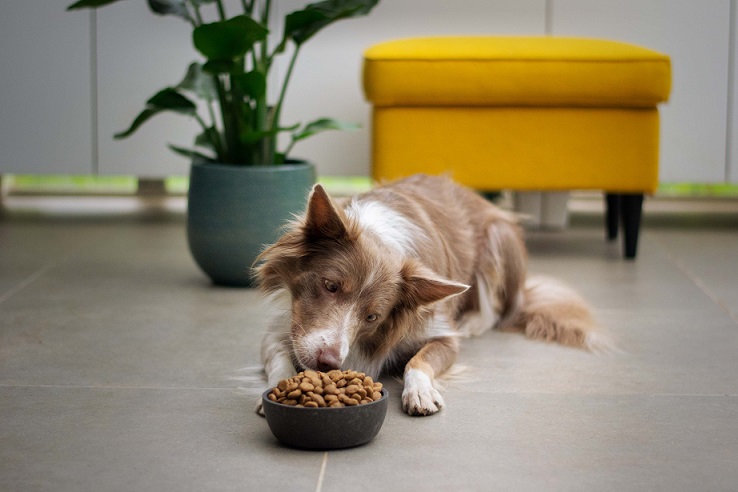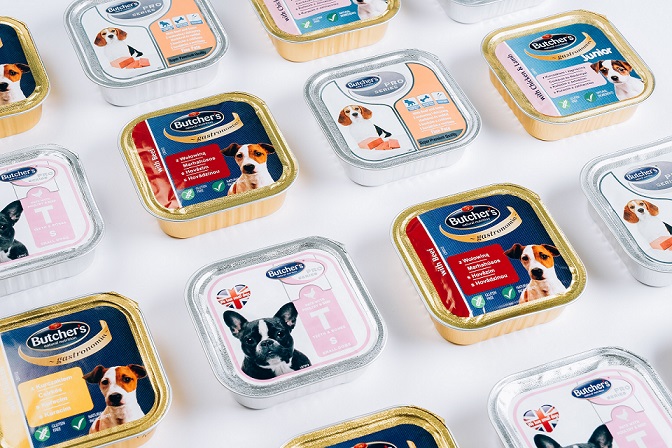Dogs can suffer from a variety of allergies, just like people. In some cases, the symptoms are mild and go untreated. In other cases, the symptoms are more severe and may require treatment. In this guide we want to help you understand your dog’s allergies.
Here’s a list of the most common dog allergies:
- Tree pollen
- Grass
- Animal dander
- Cat hair
- Dog hair
What Are Dog Allergies?
Dog allergies are a common problem, affecting as many as one in four dogs. While the cause of allergies in dogs is unknown, it is thought to be related to the way their immune system responds to specific proteins found in other animals, including plants. Symptoms of a dog’s allergy can vary, but typically include sneezing, watery eyes and a runny nose.
Some breeds are more prone to developing allergies than others and some dogs may experience more severe symptoms than others. It is important to keep an eye out for any changes in your dog’s health that could indicate an allergy and seek out advice from your veterinarian if you believe your dog has one.
In some cases there may also be an underlying infection or other medical problem that causes the dog’s immune system to become overactive. Dogs with food allergies are at increased risk for developing other allergic diseases such as asthma and nasal tumor disease.
What Causes Dog Allergies?
There is no one answer to this question as different dogs will react to different allergens. However, some of the most common causes of allergies in dogs include: food, dust mites, pet dander, latex and other environmental allergens. If your dog has a history of food allergies, it is likely that he will develop new allergies as he ages or if he begins eating different foods or supplements.
Understanding your dog’s allergies can help you to better care for him and to manage his symptoms.
Food Allergies in Dogs
The most common cause of allergies in dogs is caused by food, but other allergens can also trigger allergy symptoms. Common allergenic foods include beef, chicken, cow’s milk, eggs, wheat and fish. Dogs that have a history of food allergies may develop new allergies as they age or if they begin eating different foods or supplements.
Allergies are a group of conditions characterized by hypersensitivity to substances that are normally non-toxic. The condition can be mild, moderate, or severe and often presents with a variety of clinical signs including vomiting, diarrhea, skin rashes (a type called “atopic dermatitis”), excessive scratching, lethargy and loss of interest in food.
What Are the Symptoms of Dog Allergies?
When a dog suffers from allergies, it can experience a wide range of symptoms. Some common signs that your dog may be allergic include: excessive sneezing, coughing, wheezing, hives, redness and swelling around the eyes or nose, diarrhea or vomiting. If you notice any of these symptoms in your dog, it is important to take him to the vet for an evaluation. There is often a specific type of allergen that is causing the problem and treatment can often include medication to help relieve the symptoms.
What foods cause food allergies?
Some of the most common offenders include wheat flour products like breads, crackers and treats, soy based products like meats and pet foods, corn based products like kibble, dairy products such as milk-based recipes for biscuits or patties, and egg-based recipes for yogurt balls.
While it is impossible to list every possible allergen and avoid them all completely, following some simple guidelines can help keep your dog safe:
- Avoid giving your dog wheat, soy, corn or dairy products as treats or as part of their regular diet.
- If you are making a recipe that includes any of these ingredients, make sure to read the recipe thoroughly and substitute with an allergen free version if necessary.
- If your dog is allergic to one of these ingredients, it is important to keep him away from any other food items that may contain that allergen. This means avoiding giving him wheat flour products as snacks, for example, and ensuring he doesn’t eat anything made with soy sauce or meat products.
If you have a dog that suffers from any form of allergy, it is important to keep track of what they are eating. This will help you identify any patterns or ingredients that may be triggering their symptoms. Additionally, try to feed them smaller meals more frequently and avoid allergens in the home. If your dog is having severe reactions to certain foods, it may be necessary to consult with a veterinarian about possible dietary changes or allergy medication.
How Can I Tell If My Dog Has an Allergy?
If you are concerned that your dog may have an allergy, it is important to take him to the vet for an evaluation. The vet can perform a physical exam and test your dog for specific allergen antibodies. In some cases, The Vet May Recommend A Prescription Diet To Help Reduce Allergic Symptoms.
How Can You Treat Dog Allergies?
If you have a dog that is allergic to something, there are a few things you can do to help them.
- You can keep your dog away from the allergen by keeping it out of their environment.
- If your dog has an allergen in their food, you can try feeding them a food without the allergen.
- You can also give your dog allergy medication if they start having symptoms such as itchy skin, sneezing, and wheezing.
If you notice that your dog is having more severe symptoms, such as vomiting or diarrhea, you should take them to the vet for an evaluation. Your veterinarian may prescribe medication to help relieve the symptoms and/or give your dog a corticosteroid injection to reduce inflammation.
Are some ingredients more likely to cause allergies than others?
Some ingredients are more likely to cause allergies than others. Some common allergens include feathers, dander, and fur. In some cases, a dog’s allergy may be caused by a particular ingredient in their food or environment. If you’re concerned that your dog is allergic to something in their diet or environment, it’s important to consult with a veterinarian to rule out any other potential causes of the allergy.
When a pet eats food that contains one or more of the substances that your dog is allergic to, their body responds by producing antibodies to the antigens. These antibodies then attach themselves to cells in the pet’s body and cause symptoms such as: sneezing, runny nose, itchy skin, and coughing.
Are these the only food ingredients likely to cause food hypersensitivity?
No, there is no one food that can cause allergies in all dogs. However, certain ingredients can be a trigger for some dogs. Ingesting any of these items can lead to an allergic reaction in your pup.
There are many possible food ingredients that could cause food hypersensitivity in dogs. The most common allergens are grains, dairy, and eggs. Other potential allergens include soy, corn, peanuts, tree nuts, and fish. While any of these ingredients could be a cause of food hypersensitivity in a dog, some may be more likely to cause problems than others.
Grains are the most common allergen in dogs and can be problematic for many reasons including their high sugar content which can lead to obesity or diabetes in dogs. Dairy also contains high levels of lactose which can lead to diarrhea in dogs. Eggs are another common allergen and can trigger an allergic reaction not just in people but also in dogs. Soy is another all
How is dog food allergy condition diagnosed?
There are a variety of tests that can be used to diagnose a dog’s food allergy condition, but the most common is an elimination diet test. This involves gradually introducing different types of food to the dog and then watching for any signs of reactivity, such as vomiting, diarrhea, or skin rashes. If the dog shows any signs of intolerance to one specific type of food, this can be a sign that he has a food allergy and requires careful dietary management in order to avoid further allergic reactions.
This also requires that no other foods, treats, or supplements be fed during the trial period, including flavored vitamins and heartworm preventives.
There are blood tests that may give an indication of whether the dog is allergic to specific foods.
They will often have skin problems like dermatitis or atopy along with the typical itchiness and itchy ears associated with food allergy symptoms. As their symptoms worsen over time they can become very uncomfortable and may even develop secondary infections such as yeast infections due to ear mites which are caused by parasites found on dead debris left behind after mowing lawns or trimming hedges.
How is a food allergy treated?
There is no cure for food allergies, but treatments can help reduce the symptoms. Treatment options may include avoiding the allergen, taking medications, and using desensitization and immunotherapy.
Food allergies are treated with a variety of methods, depending on the severity of the allergy. In some cases, treatment may simply involve avoiding the allergen. In other cases, patients may need to take medications to counteract the effects of their food allergies. Treatment may also involve dietary restrictions or modifications, such as avoiding specific types of food altogether.
However, some general tips for treating food allergies include avoiding the allergen, taking medication if needed, and managing stress.
Can dog food allergy be cured?
While there is no cure for food allergies in dogs, various treatments can help manage symptoms and reduce the risk of an allergic reaction. Some common treatments include dietary changes, medication, and allergy shots. Dietary changes may include eliminating certain foods from the dog’s diet altogether or modifying the dog’s diet to include different types of food that are known to be safe.
Medication may include antihistamines or steroids, both of which can help relieve symptoms such as itching and sneezing. Allergy shots can help desensitize the dog to specific foods by injecting them with small amounts of allergen.
Is it likely that my dog could develop other food allergies?
Food allergies are a common problem in dogs. In fact, up to 25% of all dogs are allergic to one or more food items. While most food allergies are mild and only cause minor symptoms, some can be more serious and lead to life-threatening reactions. If you’re concerned that your dog may have developed a food allergy, it’s important to take him to see a veterinarian for an evaluation. The vet will be able to identify the allergen and prescribe a treatment plan if necessary.
Some dogs develop allergies to one particular food, but may also develop other food-related allergies in the future. Some common allergens that can cause food allergies in dogs include wheat, corn, soy, dairy, and eggs. If your dog has developed an allergy to one of these foods, it is important to keep him or her on a diet that avoids those allergens. If you are not sure which foods are causing your dog’s allergy problems, it is best to consult with a veterinarian.
If you think your pet may have a food allergy, it is important to discuss this with your veterinarian. This can help improve the pet’s quality of life and reduce the likelihood of them developing an itch.
Dog Food Allergies Causes and Cures
Dog Food Intolerances Most Common Dog Food Allergens Dog Food Allergy Symptoms Long-Term Effects of Dog Food Allergies Dog Food Allergy Test and Other Diagnosis Methods Genetic Predisposition to Dog Food Allergies Dog Food Allergy Treatment Best Dog Food for Allergies
Dog Food Allergies vs Dog Food Intolerances
Food allergies are an immune response that occurs when the body’s immune system mistakes a food as being harmful. Symptoms can vary depending on the person, but they may include skin rashes, hives, vomiting, diarrhea and even anaphylaxis – a life-threatening allergic reaction. Dogs can also develop food allergies, but it’s much less common.
Food intolerances are a different story – dogs don’t actually have to eat the offending food to experience negative effects. These can include gastrointestinal problems such as vomiting or diarrhea, skin irritation and even respiratory issues such as asthma. While both food allergies and food intolerances can be serious conditions in dogs, it’s important to get your pet treated early if you notice any signs of illness or discomfort.
Food allergies in dogs are fairly rare, but they can occur if your dog is intolerant to a certain food. Symptoms of food allergy in dogs typically include skin rashes, hives, vomiting, diarrhea, and even anaphylaxis – a life-threatening allergic reaction. Food intolerance in dogs doesn’t always involve symptoms; these can include gastrointestinal problems such as vomiting or diarrhea, skin irritation and even respiratory issues such as asthma. While both food allergies and food intolerances can be serious conditions in dogs, it’s important to get your pet treated early if you notice any signs of illness or discomfort.
Most Common Dog Food Allergies
- Wheat
- Corn
- Soy
- Chicken
- Fish
Dog Food Allergy Symptoms
Nasal discharge Breathing issues Seizures (food allergies could trigger them in predisposed dogs) Secondary urinary tract infections (due to overgrowth of skin bacteria) Weight loss (in combination with severe diarrhea and/or vomiting) Dog Behavioral Issues from Food Allergies The symptoms below are also rarer, and usually secondary to or linked to discomfort from symptoms listed above.
Frequent scratching of self on furniture, owner’s legs, etc.
Restlessness Frequent shaking ears or scratching ears Biting at paws, rear end, and/or tail Withdrawal or reduced interest in playtime Anorexia, or disinterest in or refusal of food
Long-Term Effects of Dog Food Allergies
The long-term effects of food allergies in dogs are usually not noticed until a dog reaches adulthood. When a food allergy develops, the immune system is triggered and creates antibodies to fight off any known foods. The body will eventually recognize these foods as foreign substances and attack them with antibodies, causing an allergic reaction.
This can be very dangerous for your pet’s health because it can lead to chronic problems such as skin issues like rashes or even more severe symptoms such as life threatening anaphylactic shock.
Food allergies are common in dogs but they aren’t always easy to identify especially when you start looking at different breeds and their habits (i.e., some breeds may be more prone to certain allergens). Some of the most commonly identified allergens are corn, soy, chicken fat, beef protein meal, artificial flavors/dyes and preservatives like BHA-2 (butylated hydroxyanisole), propylene glycol (a thick ening agent), and ethoxyquin.
Dog Food Allergy Treatment
The main treatment for a dog food allergy is to identify the cause of the allergy and remove that element from your pet’s diet. After that, you can begin treating symptoms such as skin problems or digestive issues by addressing them accordingly. For example, if your dog has diarrhea because of an allergic reaction to food then you will want to make sure he gets enough fiber in his diet so that he isn’t dehydrated. You should also be on the lookout for any other possible causes of diarrhea such as parasites or constipation, both which are common in dogs with allergies.
If you notice any change in behavior (i.e., more scratching at paws) then it’s important to take him to see his vet immediately as this could mean a problem with neurological function related to an immune response (atopic dermatitis).
Fortunately, there are many things you can do preventative measures against dog food allergies: Feed
If your dog is constantly itching, it can feel like having a thousand mosquito bites all the time and lead to poor quality of life.
Dog Food Allergy Test and Other Diagnosis Methods
A dog food allergy test is an important part of diagnosing a food allergy in a dog. The test involves administering small doses of different foods to the dog, and watching for signs of an allergic reaction. Other diagnosis methods that may be used to identify a food allergy in a dog include skin testing, blood testing, and dietary history analysis. If a food allergy is suspected, appropriate treatment can be administered to help minimize the risk of associated health problems.
Genetic Predisposition to Dog Food Allergies
There is some debate about whether or not genetics play a role in predisposing someone to develop food allergies, but the fact remains that food allergies are on the rise in both humans and dogs. In fact, according to the American College of Allergy, Asthma and Immunology (ACAAI), nearly 20% of dogs and 10% of humans are allergic to one or more foods.
There is no one answer as to why this increase is happening, but some experts speculate that it may be due to changes in our environment – including increased exposure to allergens such as dust mites and pet dander – as well as changes in our food supply. It’s also possible that we’re simply seeing an increased
Top 10 breeds most frequently Googled with the term “food allergies” or “dog food allergies”:
1. The Beagle is one of the breeds that are most commonly Googled along with the term “food allergies.” This is likely because of their propensity for developing food allergies, as well as their popularity as a breed.
2. Other breeds that commonly suffer from food allergies include Golden Retrievers, Boxers, and German Shepherds. These breeds are likely to develop food allergies due to their genetics or exposure to allergens in early life.
3. Some dogs are born with food allergies, while others develop them as they get older. Older dogs are more likely to develop food allergies if they have been exposed to allergens in their environment or if they have certain genetic traits.
Dog Food Allergy Treatment
There are a number of ways to treat food allergies in dogs. Some popular treatments include:
- Prescription diets. Prescription diets are usually the most effective, but they can be expensive and need to be tailored to the individual dog’s needs.
- Food elimination diets. Food elimination diets may be more affordable but can be less effective because they don’t always pinpoint the allergen.
- Dietary supplements. Dietary supplements can be more convenient and less expensive than prescription diets, but their effectiveness is unknown.
Allergy testing is also available to help identify which foods are triggering the allergic response in your dog.
Best Dog Food for Allergies
There are many different types of dog food on the market, and each has its own unique set of benefits and drawbacks. To make the best decision for your dog, you’ll need to understand their allergies and what foods they react to.
The most common allergens in dogs are grains, dairy products, eggs, soybeans and pet dander. Some breeds are more likely to be allergic to certain allergens than others. For example, Irish Setters are particularly sensitive to dairy products while Samoyeds are especially susceptible to wheat allergies. If you’re not sure which food your dog is allergic to, it’s best to feed them a diet made up of multiple types of food so that they can sample a variety of things without getting sick.
If your dog is already reacting to a certain type of food, you’ll need to start feeding them a food that does not contain that allergen. There are many brands of dog food that do not contain any grains, dairy products or eggs. You can also try feeding your dog a diet made up of meat, vegetables and fruit.
Some Types of Allergies in Dogs
1. food allergies
2. environmental allergies
3. skin allergies
There are different types of allergies in dogs, but the most common are food allergies.
Food allergies and food intolerances are a bit more complicated. In food allergies, the dog’s immune system reacts to specific ingredients in the food. This can cause symptoms such as vomiting, diarrhea, and itching. Treatment typically involves removing the food from the dog’s diet and administering an anti-inflammatory medication. Dogs with food allergies often have a strong reaction when they eat something that contains the allergen, such as wheat or corn. Other types of allergies can include flea allergy dermatitis (FAD), dust mite allergy, and pet dander allergy. It’s important to know what your dog is allergic to so you can keep him safe and healthy.
Skin allergies are the most common type of allergy in dogs. When your dog’s skin comes into contact with an allergen (like pollen), the dog’s immune system overreacts and produces an allergic reaction. The most common allergens that cause skin allergies in dogs are grass, tree, and weed pollen. The most common type of skin allergy in dogs is called flea allergy dermatitis. This is a skin disorder that occurs when the dog’s immune system reacts to fleas that have attached themselves to the dog’s skin. The reaction can cause inflammation and redness on the dog’s skin. Treatment typically involves killing the fleas and treating the skin rash with topical medications.
Environmental allergies are also common in dogs. These allergies involve the body reacting to environmental allergens, such as dust mites or plant pollens. Symptoms can include wheezing, coughing, and redness around the eyes and nose. These allergens can come from things like dust mites, pet dander, plants, and even other animals. Allergies to environmental allergens tend to be more common in dogs who live in areas with high concentrations of these allergens. Treatment for environmental allergies usually involves using a air purifier and/or avoiding the allergen.
Treatment typically involves using a safe flea and tick prevention product on your dog and making sure your home is free of all allergens.
It is important to know that symptoms of all these different types of allergies can overlap.
Acute Allergic Reactions
An acute allergic reaction is a sudden, intense response to an allergen. Symptoms can range from mild to life-threatening and can occur within minutes or hours after exposure to the allergen. Acute allergic reactions often result in a rash, wheezing, shortness of breath, and swelling of the face, lips, tongue, or throat. If untreated, an acute allergic reaction can lead to more serious complications such as anaphylaxis (a life-threatening condition involving swelling of the airway), shock, and even death.
Symptoms of Allergies in Dogs
1. Itching
2. Redness
3. Itching and redness in the ears
4. Itching and redness around the mouth
5. Swelling of the face, lips, or tongue
6. Difficulty breathing
If you have a dog with allergies, it is important to make an appointment with your veterinarian to get an accurate diagnosis and to help your dog start feeling better. There are a few things you can do at home to help alleviate your dog’s symptoms, but getting an accurate diagnosis from a veterinarian will help target the specific allergy that is causing the problem.
Diagnosing Allergies in Dogs
If your veterinarian feels that an allergy is a likely cause, he or she may propose allergy testing to try and determine the cause of the allergen that is causing the reaction.
However, keep in mind it may not always be possible to determine the cause of an allergy with testing.
Food allergies are often diagnosed using an elimination diet.
Treating Allergies in Dogs
- Introduce your dog to new people, places, and other dogs gradually.
- Feed your dog a healthy diet that is free of allergens.
- Keep your home clean and free of allergens.
- Provide your dog with plenty of exercise and playtime.
- Use a safe flea and tick prevention product on your dog.
The 4 Most Common Dog Food Allergens?
- Wheat
- Corn
- Soy
- Fish
What every pet owner should know about food allergies
There are many things pet owners should know about food allergies in order to better care for their animals. Some of the most important things to remember are that food allergies in pets can be life-threatening, and it’s important to keep an allergen-free environment for them. Here are some tips on how to do just that:
1. Be sure to keep your pet’s food clean and free of allergen residues. Dirty foods can cause your pet to develop an allergy, as can traces of allergens left on surfaces where the food was eaten or around the house.
2. Feed your pet only fresh, human-grade foods – never store-bought dog or cat foods, which may contain ingredients not safe for animals with food allergies.
3. Always test your pet’s food allergy before giving it to them, as some foods can trigger a severe reaction in certain pets.
4. Keep your pet exercised and mentally stimulated – boredom and stress can lead to conditions like canine separation anxiety or depression, which can exacerbate an animal’s food allergies.
Signs of Food Allergies in Dogs
Food allergies are a common problem in dogs. Symptoms can vary, but often include skin rashes, inflamed eyes and nose, and congestion. It’s important to diagnose food allergies early to prevent serious health problems. Some signs of food allergies in dogs include:
- Panting or excessive panting after eating
- Excessive licking of the face, mouth, or paws after eating
- Eczema around the mouth or neck after eating certain foods
What is the Difference Between Sensitivity and Allergy?
Sensitivity is a general term used to describe an individual’s reaction to a particular substance, such as pollen, dust mites, or pets. Dogs who are sensitive may experience minor symptoms such as runny nose, sneezing, and itchy eyes. Some people may have more serious reactions, such as asthma or eczema.
Allergy is a specific response to a certain substance. Allergic reactions can be mild or severe and can cause symptoms that vary depending on the allergen: air pollution can make you congested; food allergies can cause anaphylaxis (a life-threatening allergic reaction); latex allergies can cause hives; and rye grasses may cause an allergic rhinitis (allergic sinusitis). In some cases, people with allergies may not experience any symptoms at all.
Food allergies are the most common type of allergy in dogs. According to the ASPCA, about one-third of all dogs have some degree of food allergy. The most common foods that cause food allergies in dogs are chicken, beef, and wheat.
What Causes Food Allergies in Dogs?
There is no one answer to this question. Some believe that food allergies may be caused by a combination of environmental and genetic factors. Some research suggests that food allergies may be more common in certain breeds of dogs, such as Golden Retrievers and Labrador Retrievers.
Food Allergies Can Be Tracked Back to a Specific Meal or Ingredient
Food allergies can be tracked back to a specific meal or ingredient. In some cases, a food allergy may only occur if a dog eats a particular food item on an occasional basis, but in other cases, it can be an all-time-frequent problem. For dogs with food allergies, it is important to keep track of the foods that trigger their symptoms in order to avoid them. Allergists can perform tests to determine which foods are causing problems for certain patients.
How Can You Tell If Your Dog Has a Food Allergy?
If your dog has any of the following symptoms, it may be indicative of a food allergy: an itchy skin rash around his mouth and nose; vomiting after eating foods that are usually eaten without vomiting, such as treats; diarrhea after eating certain foods; seizures after eating certain foods (such as grapes); or sudden death after eating certain food (such as chocolate).
If you think your dog may have a food allergy, it is important to consult with a veterinarian. The veterinarian can perform blood tests to determine if your dog has a food allergy and may prescribe an elimination diet to help your dog test out which foods are causing the allergic reaction.
What Causes Food Sensitivities and Allergies?
Food sensitivities are sometimes caused by environmental factors, such as pollen or other allergens, while allergies are typically caused by proteins in foods. If your dog has a food sensitivity, you may notice that it has a reaction after eating the food, such as vomiting or diarrhea. If your dog has an allergy, you may notice an immediate allergic reaction after eating the offending food. In both cases, the symptoms will eventually go away if your dog avoids the food that is triggering its sensitivities or allergies.
Is It Safe for My Dog to Eat Insects?
Insects, are composed mainly of carbohydrates and water. While some dogs may be able to digest insect-based proteins without any issues, others may experience gastritis or intestinal blockages if they consume too many of these small creatures on a regular basis. If you’re concerned about your dog’s allergen intake and want to make sure he’s getting the right nutrients, it’s best to feed him a balanced diet that includes meat as well as insects.
What is a Rotational Diet, and How Can It Help?
A rotational diet is a type of diet that helps manage allergies by alternating different types of food to help prevent any one food from being the allergen. By rotating different types of food, your dog will not become habituated to one type of food and will be less likely to develop an allergy to it.
Elimination Diet for Dogs With Food Allergies
Elimination Diet for Dogs with Food Allergies is a dietary approach that helps to manage food allergies in dogs. It involves feeding the dog a limited number of safe, allergen-free foods and allowing them to eliminate their food allergens in the environment. This allows the dog’s immune system to learn to tolerate these allergens, paving the way for potential desensitization therapy.
If the ingredients in your dog’s regular food are causing the symptoms, removing those ingredients from his diet may help to improve his condition. It’s also important to know that giving your dog treats during the elimination diet period will not help and may even cause problems. You should also stop providing their regular food during this time.
It is important to understand that not all dog foods are created equal when it comes to allergies. Feeding a dog food that is not hypoallergenic can cause severe allergic reactions in some dogs. When your dog is on the elimination diet, only the hypoallergenic food should be fed to them. This will help reduce the risk of any future allergic reactions.
If your dog is on a prescription diet, it is important to continue following the instructions of the dietician or vet. The elimination diet allows your dog’s body to adjust to the new food and will help determine if your dog has any allergies.
Best Foods for Dogs with Allergies
1. Purina One
2. Beneful
3. Friskies Wilderness
4. Royal Canin Veterinary Diet
5. Wellness Core Natural
6. Canidae High Performance
Final thoughts
First and foremost, if you think your dog might have an allergy, it is important to take him to see a veterinarian as there are many different treatments available for dog allergies. Some allergies can be treated with medication while others require surgery.
If your dog does have an allergy, it is important to keep track of his symptoms and monitor them closely over time. Symptoms of common allergens can include sneezing, coughing, watery eyes or nose, skin rash or hives and difficulty breathing.
If you think your dog may have an allergy, it is important to monitor his symptoms and consult a veterinarian as soon as possible.









